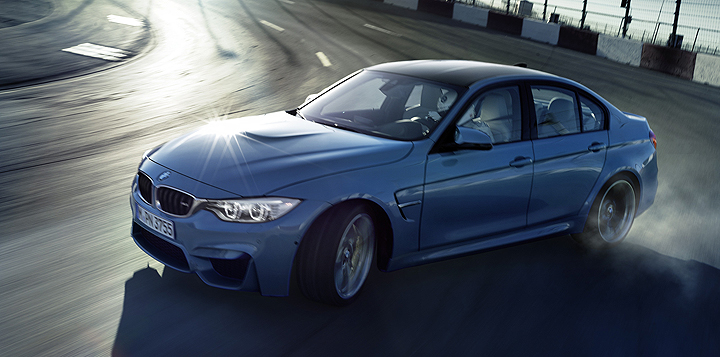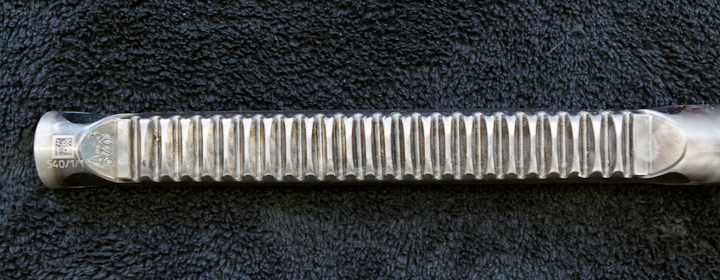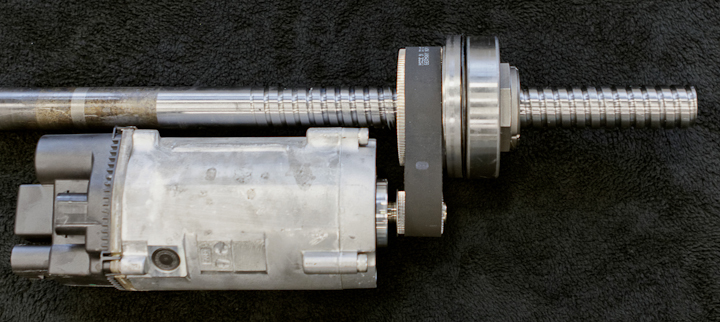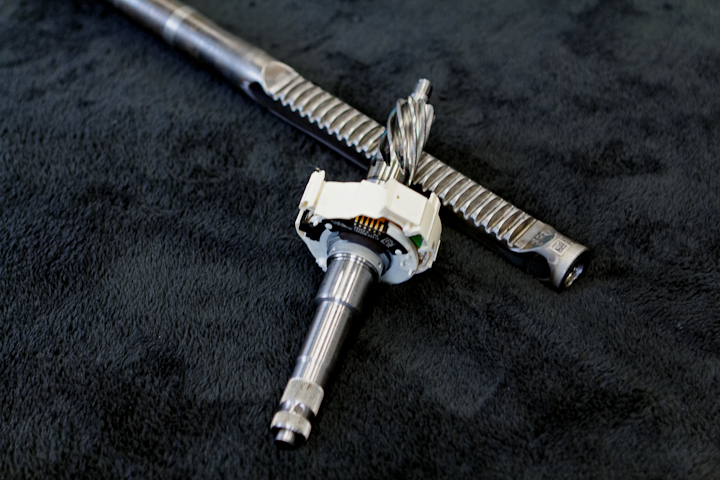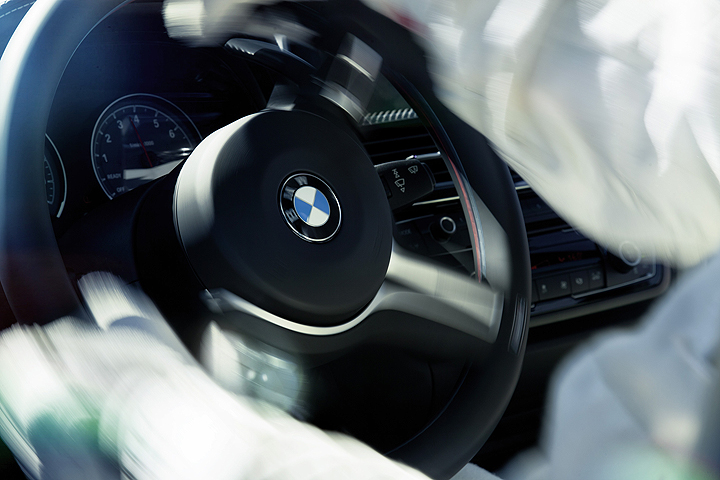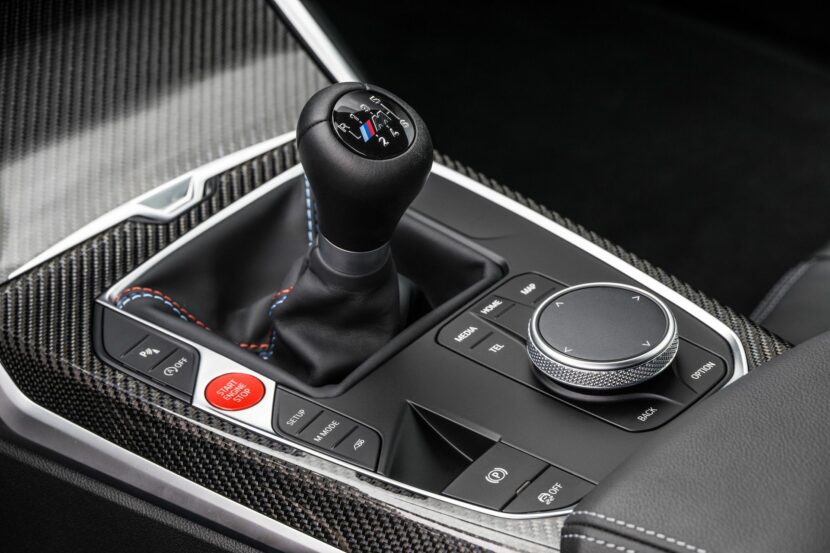Until now, the power steering employed in M automobiles was hydraulic servo-assisted, but both the new BMW M3 Sedan and the new BMW M4 Coupé are set to be the first M automobiles to be fitted with an electrical servo-assisted steering system. What are the reasons behind this development?
Benedikt Nussstein: The new M Servotronic with Electro Power Steering (EPS) weighs about 3.5 kg less than comparable systems with hydraulic servo-assisted steering, which is important when it comes to creating an optimum axle load distribution and in turn ensuring agile handling. The new steering saves approximately 0.3 litres of petrol per 100 km, because energy is only consumed when actually steering, while a hydraulic pump represents a constant drain on power. And by using EPS it is also possible to install the latest driver assistance systems.
Why was it decided to develop a fully new steering system for M automobiles rather than modify an existing one?
The new BMW M3 Sedan and the new BMW M4 Coupé both have high-performance suspensions, which are consistently dimensioned for optimum vehicle dynamics. The special axle kinematics and high degree of grip in the tyres result in high levels of steering rod power to the steering system. As a result, M axles are able to provide better response from the road surface to the steering wheel, and in turn to the driver.
The aim of the new development was to obtain extremely direct and spontaneous responsiveness – especially from the central rest position of the steering wheel. The yardstick here was the last generation of the BMW M3, and our goal was to improve on it.
Toothed rack with i-Var gear ratios.
The car must respond well to the steering and the steering angle must be right – at both low and high speeds. The vehicle response must not be too sharp at very high speeds. Furthermore, we selected a variable toothed rack with new gear ratios.
Steering rack with ball screw.
The aim was moreover to avoid any hardening of the steering when performing fast and sporty steering manoeuvres. To enable this, we have employed a larger than usual EPS motor.
Ball screw with EPS power pack (EPS motor plus EPS controller). The ball screw transforms the rotational motion of the motor into a translational motion of the rack.
In several interviews, Mr Biermann, head of development for M automobiles, has heaped praise on the M Servotronic system used in the new BMW M3 Sedan and the new BMW M4 Coupé. What is it that justifies this evaluation, from your point of view?
EPS systems can often convey a somewhat synthetic feel, and this is precisely what we did not want. The driver of the BMW M3 or BMW M4 should have a good sense of the nature of the road surface. He wants to be able to feel when he is driving over a drain cover in the road or when the surface material changes. This steering is responsive enough to convey these impressions very clearly – when we began its development, I didn’t expect it to be able to do this to the extent it does.
Similarly, the driver is able to immediately feel any transitional responses in the steering, the moment he enters the marginal zone when the car begins to skid due to over or understeering. This makes it possible to drive the car very precisely at its limit: not only by DRM racing drivers – although Bruno Spengler and Timo Glock are very impressed with the steering.
Torsion bar with rack. The torsion bar measures the torque applied by the driver and in turn controls the EPS motor. The angle is applied by the driver, while the power is provided in part by the EPS motor.
The axle itself has a great deal of potential and returns the steering to its central, zero position, for example, by mechanical means. This means that we can dispense almost entirely with additional functions such as active return motion in the software, which may create a synthetic steering sensation.
Our steering offers all the benefits of a hydraulically assisted system. Nothing has been lost but plenty has been gained.
What has been gained?
Well we already spoke about the fundamental benefits of EPS.
A further advantage is that the steering can be tuned more precisely to reflect with other optimisations made in the context of the suspension. The precise steering feel is a result of the interplay between a rigid body, axle kinematics, tyres, bearing coordination, stabiliser, and the steering itself, among other factors. This explains why developers employed in suspension coordination at BMW M are so heavily involved in networking, why they need to talk so much about matters such as these. For instance, when the parameters of a stabiliser change in the course of a development process, we are able to perform optimum readjustment of the steering. That is something which is not so easily possible in this form with hydraulically assisted power steering.
What was the greatest challenge in developing this steering?
The biggest challenge was to ensure that the industrial production suited the EPS steering in the way in which we developed it. The steering has very good responsiveness as far as the road surface is concerned. However, this precision places great demands on the production process. It requires a very precisely produced steering system and, in turn, precisely turned out parts and components.
The driver is able to choose from three different characteristic curves for the steering. Why did you decide to provide this capability?
Our customers have very different tastes. There are drivers who prefer light steering while others prefer to use more manual force. This is why we have included three steering mode settings: Comfort, Sport und Sport plus. Changing from one mode to another will not result in any functional differences and will not, for instance, cause any change in the quality of the steering’s responsiveness. We also have racing drivers in our department; they prefer to apply the Comfort mode curve – while the adaptive M suspension is set to Sport plus. It is really up to the driver to decide which choice best suits his personal preferences.
Mr Nussstein, thank you very much for talking to us.
[Source: M-Power]


